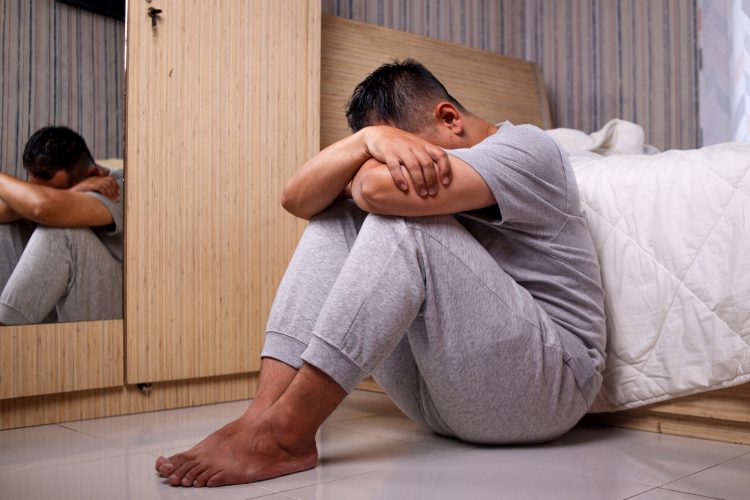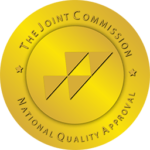Opioid withdrawal is a formidable challenge that emerges when an individual ceases or reduces the use of opioid drugs after a period of prolonged intake. This article will delve into what constitutes opioid withdrawal syndrome, its symptoms, and why it’s essential to understand these symptoms to prevent an opioid overdose and provide effective treatment and recovery.
Detailed Overview of Opioids
Opioids are a broad category of drugs known for their pain-relieving properties, but they also pose significant risks of addiction, substance use disorders, and dependency. This section will provide an in-depth examination of opioids, including their types, uses, and how they impact the brain’s chemistry.
Types of Opioids
There are several types of opioids, each with different characteristics and uses. These include:
- Prescription Opioids: Opioid medications such as oxycodone, oxycontin, hydrocodone, codeine, and morphine, are prescribed for pain relief.
- Synthetic Opioids: Including fentanyl, which is more potent than other types and often used in medical settings.
- Illegal Opioids: Heroin is the most well-known illegal opioid, often used recreationally for its euphoric effects.
Types of Mechanism of Action
Opioids work by binding to specific receptors in the brain and spinal cord, part of the broader nervous system. This binding action results in:
- Pain Relief: By altering the way the brain perceives pain, opioids provide significant relief, especially for chronic or acute pain conditions.
- Euphoria: Many opioids trigger the release of dopamine, a neurotransmitter associated with pleasure, leading to feelings of euphoria.
Risks and Side Effects
While opioids are effective for pain management, they come with risks:
- Addiction: Due to their euphoric effects, opioids have a high potential for abuse and addiction.
- Tolerance: Over time, the body requires higher doses to achieve the same effect, leading to an increased risk of overdose.
- Withdrawal Symptoms: Stopping or reducing opioid use can lead to uncomfortable withdrawal symptoms, a key factor in dependency.
Impact on Brain Chemistry
Opioids have a profound impact on brain chemistry:
- Neurotransmitter Release: They stimulate the release of dopamine, which can disrupt the natural balance of neurotransmitters over time.
- Brain Structure Changes: Prolonged opioid use can lead to changes in certain brain areas, particularly those involved in reward and decision-making.
Use in Medicine and Potential for Misuse
While opioids are indispensable in medical settings, their potential for misuse and addiction poses significant challenges:
- Medical Use: Prescribed for pain relief, post-surgery recovery, and in palliative care.
- Misuse and Overdose: The line between medical use and misuse can be thin, with
- Overdose Risks: increasing with higher dosages or when mixed with other substances.
The Addictive Nature of Opioids
Opioids have a notoriously high potential for addiction, a critical concern in both medical and recreational contexts. This addictive quality stems from several factors:
- Neurochemical Changes: Opioids alter brain chemistry by triggering the release of dopamine, the neurotransmitter associated with pleasure and reward. This creates a powerful sense of euphoria that can lead to psychological dependence.
- Tolerance Development: Regular opioid use leads to tolerance, meaning higher doses are needed to achieve the same pain-relieving or euphoric effects. This escalation can quickly transition into addiction.
- Physical Dependence: Over time, the body becomes accustomed to the presence of opioids. When usage is reduced or stopped, uncomfortable withdrawal symptoms occur, compelling continued use to avoid discomfort.
- Psychological Factors: Emotional pain, stress, and mental health disorders can increase the risk of turning to opioids for relief, further complicating the addiction cycle.
- Environmental and Social Influences: Factors such as social environment, peer pressure, and availability of drugs play a significant role in the development of opioid addiction.
Symptoms of Opioid Withdrawal
Opioid withdrawal is a physically and emotionally challenging process that occurs when a person reduces or stops taking opioids after prolonged use. The symptoms can vary in intensity and duration, depending on several factors such as the type of opioid used, the duration of use, and the individual’s physical and mental health. Understanding these symptoms is crucial for managing withdrawal effectively and safely.
Early Symptoms of Opioid Withdrawal
The initial phase of opioid withdrawal typically begins a few hours after the last dose. Early symptoms are often flu-like and include:
- Anxiety and Agitation: A sense of nervousness or restlessness is common, often accompanied by irritability.
- Muscle Aches: Mild to severe muscle pains are frequent, particularly in the back and legs.
- Insomnia: Difficulty sleeping is a hallmark of early withdrawal, contributing to fatigue and mood changes.
- Sweating and Fever: Many experience excessive sweating and occasional fever, indicating the body’s reaction to the absence of opioids.
- Runny Nose and Teary Eyes: These are similar to common cold symptoms, often accompanied by frequent yawning.
Peak Symptoms of Opioid Withdrawal
After the peak phase, some symptoms may persist or evolve.
- Cravings for Opioids: A strong desire to use opioids again can last long after other symptoms have subsided.
- Depression and Anxiety: These can continue or even intensify as the individual deals with the psychological impact of withdrawal.
- Fatigue and Lethargy: A general feeling of tiredness and lack of energy may persist for weeks.
- Cognitive Impairments: Difficulty concentrating or thinking is not uncommon in the later stages of withdrawal.
- Sleep Disturbances: Problems with sleep patterns, such as insomnia or disturbed sleep, can continue for some time.
Extended Timeline of Opioid Withdrawal
The timeline of opioid withdrawal is a critical aspect of understanding and managing the detox process. It varies from person to person, influenced by factors such as the type of opioid used, duration of use, dosage, individual physiological differences, and method of detox. Tapering off opioids during detox is the most common opioid detox process, which includes gradually reducing the dosage of the drug to minimize withdrawal symptoms. Here, we provide a detailed breakdown of the stages of opioid withdrawal and symptoms.
Onset of Symptoms
The onset of opioid withdrawal symptoms typically begins within a few hours to a day after the last dose, depending on the opioid’s half-life.
- Short-acting Opioids: For opioids like heroin and some prescription painkillers, withdrawal symptoms can start as early as 6-12 hours after the last dose.
- Long-acting Opioids: In the case of longer-acting opioids, such as methadone, symptoms may not appear until 30 hours or more post the last consumption.
Early Phase (24-72 Hours)
The first few days are usually the most challenging, with the onset of both physical and psychological symptoms.
- Peak of Physical Symptoms: Symptoms like muscle aches, sweating, and gastrointestinal distress are most intense during this phase.
- Psychological Distress: Anxiety, agitation, and insomnia are also at their peak, significantly impacting the individual’s emotional state.
Peak Phase (72 Hours - 1 Week)
This phase is characterized by the continuation and peaking of many symptoms.
- Intensity of Symptoms: While some symptoms may begin to ease, others, particularly psychological ones, can remain intense.
- Risk of Dehydration: Due to vomiting and diarrhea, there’s a heightened risk of dehydration, which can lead to further complications.
Resolution Phase (1 Week and Beyond)
Following the peak phase, symptoms gradually begin to diminish, but the timeline can vary significantly.
- Decrease in Physical Symptoms: Physical symptoms like nausea, vomiting, and muscle aches start to reduce in intensity.
- Continued Psychological Symptoms: Emotional and psychological symptoms such as anxiety and cravings may persist for weeks or even months.
- Post-Acute Withdrawal Syndrome (PAWS): In some cases, individuals may experience PAWS, where symptoms like mood swings, insomnia, and reduced concentration can persist for an extended period.
Factors Influencing the Withdrawal Timeline
Several factors can influence the duration and intensity of withdrawal symptoms:
- Type of Opioid Used: Longer-acting opioids may result in a delayed onset of symptoms but a prolonged withdrawal period.
- Method of Use: Injection, snorting, or oral ingestion can affect how quickly the body metabolizes the drug, impacting the withdrawal timeline.
- Duration and Amount of Use: Prolonged and high-dose opioid use typically leads to more extended and severe withdrawal periods.
- Individual Health Factors: Age, overall health, metabolism, and the presence of co-occurring mental health disorders can all affect the withdrawal process.
Exhaustive Treatment Options for Opioid Withdrawal
Treating opioid withdrawal requires a comprehensive approach that addresses both the physical and psychological aspects of addiction. The following section explores the various treatment options available, each tailored to different stages and severities of opioid dependence.
Medical Detoxification
Medical detoxification is the first step in treating opioid withdrawal. It involves a controlled and medically supervised environment where individuals can safely rid their bodies of opioids.
- Supervised Withdrawal: Medical professionals monitor vital signs and overall health to ensure safety during the detox process.
- Medication Support: Certain medications may be administered to alleviate withdrawal symptoms and reduce cravings.
- Nutritional and Hydration Support: Ensuring proper nutrition and hydration is crucial, as the detox process can be physically taxing.
Medication-Assisted Treatment (MAT)
MAT involves using medications, in combination with counseling and behavioral therapies, to provide a “whole-patient” approach to treatment.
- Methadone: A long-acting opioid used to reduce cravings and withdrawal symptoms without producing the euphoria associated with other opioids.
- Buprenorphine: Often combined with naloxone (as in Suboxone), buprenorphine reduces withdrawal symptoms and cravings, while naloxone helps prevent misuse.
- Naltrexone: This medication blocks the effects of opioids at their receptor sites in the brain and is used primarily to prevent relapse.
- Clonidine: A medication primarily used for treating hypertension, is effectively used off-label to alleviate various symptoms of opioid withdrawal, such as anxiety, agitation, muscle aches, and sweating, by reducing the overactivity of the nervous system often seen during detoxification.
BRIDGE Device
The BRIDGE device is a groundbreaking technology that revolutionizes the treatment of opioid use disorder and opiate withdrawal. FDA-cleared, it offers a novel approach to easing the detox process, particularly beneficial during the initial, most challenging phase of withdrawal. This device serves as an effective intermediary step, bridging the gap from active opioid use to the initiation of Medication-Assisted Treatment (MAT) programs, thereby helping to alleviate withdrawal symptoms and minimize cravings. Its introduction marks a significant advancement in the treatment and management of opioid addiction, providing a more comfortable path toward recovery.
Therapy and Counseling
Psychological support is an integral part of the drug abuse treatment process, addressing the underlying reasons for addiction and providing tools for coping and recovery.
- Cognitive Behavioral Therapy (CBT): Helps individuals understand their addiction, develop coping strategies, and change harmful thought patterns.
- Group Therapy: Offers peer support and a space to share experiences and coping strategies.
- Family Therapy: Involves family members in the recovery process, helping to repair relationships and build a supportive home environment.
Aftercare and Relapse Prevention
Long-term support is crucial for preventing relapse and maintaining sobriety.
- Sober Living Homes: Provide a drug-free environment with peer support, often serving as a transitional living option post-treatment.
- Ongoing Counseling and Support Groups: Continuing therapy and participating in support groups like Narcotics Anonymous (NA) can provide ongoing support and accountability.
- Lifestyle Changes: Encouraging healthy habits, such as regular exercise and hobbies, can help maintain sobriety and improve quality of life.
Getting Help
Effectively managing opioid withdrawal involves combining medical treatments with psychological support and innovative approaches. This integrated strategy is key to easing withdrawal symptoms and paving the way for a sustainable recovery from opioid addiction. If you or a loved one are struggling with an opioid addiction or substance use disorder, get in touch with TrueSelf Recovery to start your journey to recovery.
FAQs
What lifestyle changes can aid in managing opioid withdrawal symptoms?
Lifestyle changes play a crucial role in managing opioid withdrawal symptoms. Staying hydrated and maintaining a balanced diet helps the body heal and cope with physical stress. Regular exercise, even light activities like walking or yoga, can improve mood and reduce stress. Establishing a routine sleep schedule is also important, as consistent rest aids recovery and mitigates insomnia. Additionally, engaging in stress-relieving activities such as meditation, breathing exercises, or hobbies can provide emotional relief and distract from cravings.
Are there any complications associated with opioid withdrawal?
While opioid withdrawal is not typically life-threatening, it can lead to several complications, particularly without proper medical supervision. Dehydration due to vomiting and diarrhea is a common risk, potentially leading to more serious health issues. Emotional and psychological symptoms, such as severe anxiety and depression, can also pose challenges and increase the risk of relapse. In some cases, withdrawal can exacerbate underlying health conditions. It’s important to undergo withdrawal under medical supervision to mitigate these risks effectively.
What role do support groups play in the recovery process?
Support groups are a cornerstone of the recovery process, offering a sense of community and mutual understanding. Groups like Narcotics Anonymous (NA) provide a safe space to share experiences, struggles, and successes. They also offer accountability and ongoing support, which can be crucial for maintaining sobriety. Participation in support groups can reduce feelings of isolation and provide practical advice and encouragement from others who have faced similar challenges.
How can I support someone going through opioid withdrawal?
Supporting someone through opioid withdrawal involves providing emotional support, understanding, and encouragement. It’s important to recognize the physical and emotional challenges associated with withdrawal and to offer a stable and supportive environment. Encouraging the individual to seek professional help and accompanying them to appointments can be very helpful. Being patient and non-judgmental is crucial, as withdrawal can be a taxing process with potential setbacks. Providing practical support, such as helping with daily tasks or ensuring they have access to healthy meals, can also be beneficial. Lastly, educating oneself about opioid addiction and withdrawal can help in understanding what the person is going through and how best to support them.
What should be done if a relapse occurs?
If a relapse occurs, it’s important to view it not as a failure but as a part of the recovery journey. The first step should be seeking immediate help from a healthcare professional, therapist, or support group. Understanding the triggers that led to relapse is crucial for preventing future occurrences. It’s also important to reinforce or adjust treatment and recovery plans, possibly including changes in medication, therapy, or support systems. Encouragement and support from family and friends can also play a significant role in overcoming a relapse and continuing the path to recovery.



